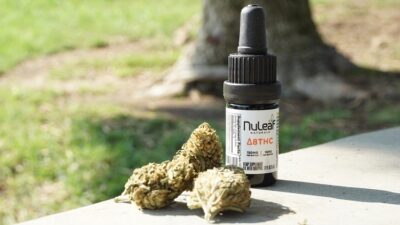Table of Contents
Introduction
As the seasons change in the United Kingdom, it’s time for gardeners and orchard enthusiasts to turn their attention to one of the quintessential British fruits – apples. Whether you’re a seasoned horticulturist or a novice gardener, the prospect of cultivating your own apple trees and enjoying the sweet, crisp fruits they produce can be immensely rewarding. In this article, we’ll explore the world of stepover apple trees, a popular choice for compact gardens, and provide you with expert tips on how to maintain them for high-yielding crops.
But before we delve into the world of stepover apple trees, let’s take a moment to understand the needs of another beloved fruit-bearing plant: the blackberry bush. In a brief interview with a CRJFruitTrees expert, we’ve gathered valuable insights into how to care for these brambly wonders.
Stepover Apple Trees: A Space-Saving Solution
Stepover apple trees are a fantastic solution for gardeners with limited space. These low-growing, compact apple trees offer not only a space-saving advantage but also an aesthetic appeal, adding charm and character to any garden. With proper care and maintenance, stepover apple trees can yield a bountiful crop of delicious apples. Let’s dive into the essential tips for cultivating and maintaining these charming fruit-bearing wonders.
Choosing the Right Varieties
Before you embark on your stepover apple tree journey, it’s essential to select the right apple varieties. Different apple varieties thrive in varying climates and soil conditions. For the UK’s climate, consider varieties like ‘Discovery,’ ‘Egremont Russet,’ and ‘James Grieve.’ These apples are known for their adaptability and excellent flavor.
Planting Your Stepover Apple Trees
Select a Suitable Location: Like blackberry bushes, stepover apple trees require a sunny location. Determine a location that receives at least six hours of direct sunlight on a daily basis. Make sure that the soil has a good drainage system and that there are no obstructions in the way, such as tree roots or large rocks.
Prepare the Soil: Test your soil’s pH and amend it if necessary to achieve a slightly acidic to neutral pH level (around 6.0-7.0). Incorporate organic matter, such as well-rotted compost, to improve soil fertility and drainage.
Spacing: When planting stepover apple trees, allow for approximately 2-3 feet between each tree to provide enough room for their low-growing branches.
Planting Depth: Make sure the swelling portion on the trunk, known as the graft union, is about two inches above the soil. Planting too shallowly might make the tree unstable, while planting too deeply could cause root rot.
Watering: Provide ample water to newly planted stepover apple trees. Maintain a consistent moisture level in the soil, but steer clear of waterlogging. When applied around the base of the tree, a layer of mulch can assist in the retention of moisture and the regulation of soil temperature.
Pruning and Training Your Stepover Apple Trees
Pruning and training are crucial aspects of stepover apple tree maintenance. These practices help shape the trees, encourage fruit production, and ensure that the branches remain at the desired height.
Initial Training: Start training your stepover apple trees during their first winter after planting. Choose the strongest, healthiest shoot as the leader, and gently bend it to a horizontal position, securing it to a horizontal support wire or frame. This encourages the tree to develop its characteristic low-growing form.
Annual Pruning: Each year, prune your stepover apple trees during the dormant winter months (usually December to February). Remove any vertical shoots or branches that grow upward. Also, trim any lateral branches that extend beyond the desired height of your stepover tree.
Thinning Fruits: To promote larger and healthier apples, thin the fruit clusters in late spring or early summer. Remove excess fruits, leaving about 6 inches between each remaining apple. This prevents overcrowding and ensures that the remaining apples receive adequate sunlight and nutrients.
Pest and Disease Management for Stepover Apple Trees
Just like blackberry bushes, stepover apple trees are susceptible to certain pests and diseases that can affect fruit production. Here are some key steps to keep your stepover apple trees healthy:
Regular Inspection: Periodically inspect your stepover apple trees for signs of pests or diseases. Common pests include aphids, apple scab, and codling moths.
Organic Pest Control: Consider using organic methods to control pests, such as releasing beneficial insects like ladybugs or using neem oil. Steer clear of chemical pesticides, as they have the potential to cause harm to beneficial insects and disrupt habitats.
Fungicide Treatments: Apply fungicide treatments as a preventative measure against apple scab and other fungal diseases. Follow the manufacturer’s instructions and schedule treatments as needed.
Prune Diseased Branches: If you notice any diseased branches or leaves, prune them immediately and dispose of them away from your garden to prevent the spread of diseases.
Harvesting Your Stepover Apples
The moment you’ve been patiently waiting for has arrived – it’s time to harvest your stepover apples! Here are some tips for picking your apples at their peak:
Timing: Apples are ready for harvest when they are firm, fully colored, and come away easily from the tree with a gentle twist. The timing may vary depending on the variety, so consult with your local nursery or gardening experts for specific guidance.
Use a Picking Tool: To prevent damage to the tree and apples, use a specialized apple picker or a long-handled fruit picker. This allows you to reach high branches without causing harm.
Storage: Store your harvested apples in a cool, dark place. Apples can be stored in a cellar, garage, or refrigerator. Properly stored, they can last for several months.
Conclusion
Stepover apple trees are an excellent choice for those with limited garden space, and they offer a delightful and rewarding experience for any gardener. By choosing the right apple varieties, planting them in suitable conditions, and following proper maintenance techniques, you can enjoy high-yielding crops of delicious apples for years to come.
Just as with blackberry bushes, caring for stepover apple trees involves attention to detail, regular pruning, and proactive pest and disease management. With a little patience and dedication, you’ll soon be reaping the rewards of your own mini-orchard, adding a touch of traditional British charm to your garden, and delighting in the taste of your very own homegrown apples. So, roll up your sleeves and get ready to enjoy the fruits of your labor – quite literally!












Comments